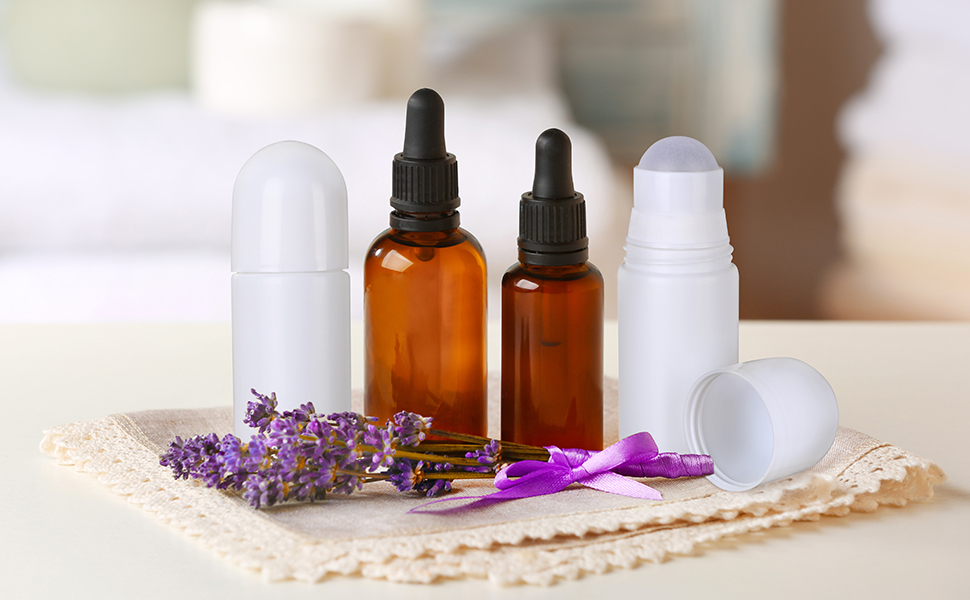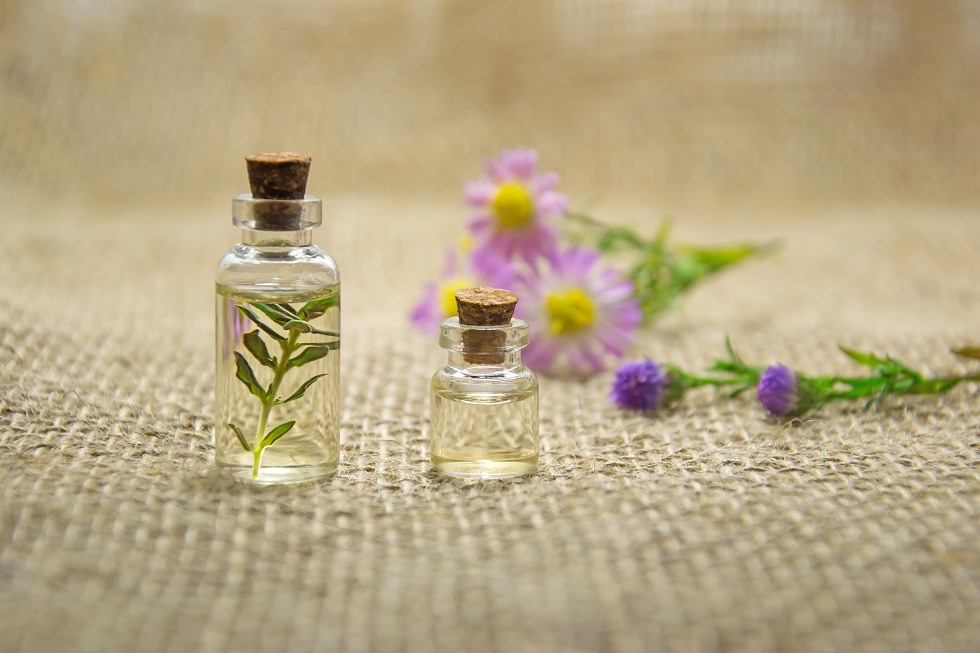In the realm of personal expression, where individuality and creativity reign supreme, the art of perfumery emerges as a captivating avenue for self-discovery and olfactory delight. Unlike the mass-produced fragrances that line store shelves, crafting your own perfume allows you to embark on a personalized journey, blending natural essences to create a scent that is uniquely yours. Whether you’re a seasoned fragrance enthusiast seeking to expand your olfactory horizons or a curious beginner eager to explore the world of perfumery, this comprehensive guide will equip you with the knowledge and techniques to transform ordinary ingredients into extraordinary perfumes.

I. Unveiling the Secrets of Perfumery: Understanding Fragrance Notes and Base
Before embarking on your perfume-making adventure, it’s essential to delve into the intricacies of fragrance composition. Perfumes are not merely a collection of random scents; rather, they are carefully orchestrated symphonies of aromas, each note playing a distinct role in creating an overall olfactory experience.
- Fragrance Notes: The Symphony of Scents
Every perfume is composed of three layers of fragrance notes: top notes, middle notes, and base notes. Each layer plays a crucial role in shaping the overall scent profile:
-
Top Notes: The first impression, the initial burst of fragrance that captures attention and sets the tone for the perfume. These notes are typically light, airy, and citrusy, such as bergamot, lemon, or orange.
-
Middle Notes: The heart of the perfume, forming its core character and providing depth and complexity. These notes emerge after the top notes dissipate, often including floral scents like rose, lavender, or jasmine, as well as herbal notes like rosemary or sage.
-
Base Notes: The lingering foundation, ensuring longevity and balance. These notes are rich, warm, and sensual, such as sandalwood, patchouli, or vanilla. They provide the perfume with its staying power and anchor the lighter top and middle notes.
-
The Perfume Base: The Canvas for Your Creation
The base, or carrier, of your perfume serves as the canvas upon which your fragrance notes will be painted. Two common choices for the base are alcohol and jojoba oil:
-
Alcohol: The traditional choice, alcohol is an effective carrier for fragrance oils, allowing them to diffuse evenly and linger on the skin. However, some individuals may find alcohol-based perfumes drying or irritating.
-
Jojoba Oil or Other Carrier Oils: A gentler alternative to alcohol, jojoba oil is a natural moisturizer that can soothe the skin. Other carrier oils, such as coconut oil or grapeseed oil, can also be used.

II. Assembling Your Fragrance Arsenal: Essential Oils and Other Ingredients
With a basic understanding of fragrance notes and the perfume base, it’s time to gather your essential oils and other ingredients, the building blocks of your signature scent.
- Essential Oils: Nature’s Fragrant Essences
The world of essential oils offers a vast array of aromatic possibilities, each with its unique scent profile and therapeutic properties. Some popular essential oils to consider include:
-
Floral Scents: Rose, lavender, jasmine, ylang-ylang
-
Woody Scents: Sandalwood, cedarwood, patchouli
-
Citrus Scents: Lemon, orange, bergamot
-
Spicy Scents: Ginger, clove, cinnamon
-
Herbal Scents: Rosemary, peppermint, sage
-
Additional Ingredients: Enhancing Your Perfume
Beyond essential oils, several other ingredients can add depth, complexity, and longevity to your perfume:
-
Absolutes: Concentrated extracts of essential oils, offering a richer and more intense fragrance
-
Resins: Aromatic substances derived from plants, adding warmth, depth, and complexity to the perfume
-
Fixatives: Enhancing the longevity of the perfume, preventing the scent from fading quickly

III. Creating Your Signature Scent: Blending and Experimentation
With your fragrance arsenal at hand, it’s time to embark on the most exciting part of the process: blending and experimenting to create your signature scent.
-
Choosing Your Fragrance Notes: Consider your personal preferences, the desired mood, and the occasion for which you’ll wear the perfume. For instance, a light and refreshing citrus blend might suit daytime wear, while a warm and sensual blend could be perfect for an evening out.
-
Starting with Small Amounts: Begin by adding a few drops of each essential oil to a small vial or test strip. Avoid overpowering the blend with too much of any one oil.
-
Experimenting with Ratios: Adjust the proportions of each oil until you achieve a balance that pleases your senses. Don’t be afraid to experiment and try different combinations.
-
Creating a Blending Chart: Document your experiments and successful blends in a blending chart. This will serve as a valuable reference point for future perfume creations, allowing you to recreate your favorites or explore variations on a theme.
-
 IV. The Art of Patience: Letting Your Perfume Mature
IV. The Art of Patience: Letting Your Perfume MatureWhile the temptation to indulge in your creation might be strong, patience is a crucial ingredient in the perfume-making process.
-
Allowing the Fragrance to Settle: After blending your oils, let your perfume rest for at least 24 hours. During this time, the fragrance notes will have a chance to meld and mature, resulting in a more harmonious and well-rounded scent.
-
Evaluating the Scent: Once the resting period is complete, assess the fragrance. Does it meet your expectations? Are the notes balanced, or does one overpower the others? Don’t hesitate to make adjustments if needed.
-
Repeating the Aging Process: If necessary, allow your perfume to age further. The longer a perfume matures, the more refined and complex its scent becomes.
V. Bottling and Storing Your Perfume: Preserving Your Creation
Once your perfume has reached its full aromatic potential, it’s time to transfer it to a beautiful bottle, ready for application and enjoyment.
-
Choosing a Perfume Bottle: Select a dark glass bottle to protect your perfume from light exposure. Light can degrade the fragrance oils and alter the scent over time. Opt for a bottle with a secure lid to prevent evaporation.
-
Transferring the Perfume: Carefully pour your perfume into the chosen bottle, leaving a small air space at the top. This air space allows for proper expansion and contraction of the liquid with temperature changes.
-
Storing Your Perfume: Keep your perfume in a cool, dark place away from direct sunlight and heat. These factors can accelerate the breakdown of the fragrance oils and shorten the lifespan of your perfume.
VI. The Art of Application: Enhancing Your Personal Style with Your Signature Scent
Now that you’ve crafted your own unique perfume, it’s time to learn how to apply it to maximize its effect and enhance your personal style.
-
Pulse Points: The Scent-Diffusing Areas: Certain areas on your body naturally emit more heat, which helps to diffuse the fragrance. These “pulse points” are ideal locations for applying perfume.
-
Wrists: A classic and effective location for applying perfume. The warmth from your pulse will help to release the fragrance throughout the day.
-
Neck: Another warm area that helps to diffuse the fragrance. Applying a small amount of perfume to the nape of your neck can create a subtle yet noticeable scent trail.
-
Behind the Ears: A subtle yet noticeable application point. The warmth behind your ears can help to release the fragrance throughout the day.
-
Inner Elbows: A pulse point that releases fragrance with movement. Applying a touch of perfume to your inner elbows allows the scent to waft with each arm movement.
-
-
Avoid Over-Applying: A little goes a long way when it comes to perfume application. Over-applying can create an overwhelming and cloying scent. Use a light touch and apply small amounts in multiple spots.
-
Moisturized Skin: A Better Fragrance Base: Applying perfume to well-moisturized skin allows the fragrance to adhere better and last longer. Dry skin can absorb the fragrance too quickly, reducing its longevity.
VII. Additional Tips and Tricks: Perfuming Perfection
As you embark on your perfume-making journey, keep these additional tips in mind to elevate your creations and refine your technique:
-
Layering Fragrances: Experiment with layering complementary scents to create a unique olfactory experience. For example, you could layer a light floral perfume with a warm and woody base note.
-
Creating a Signature Scent for Different Occasions: Consider the mood and atmosphere when choosing fragrances for different occasions. A light and refreshing scent might be ideal for daytime wear, while a more intense and seductive fragrance could be reserved for special evenings.
-
Personalizing Your Perfume with DIY Kits: Explore pre-mixed DIY perfume kits that provide a curated selection of essential oils and base notes. These kits can be a great starting point for beginners or those who want to experiment with specific scent profiles.
-
Seeking Guidance from Experienced Perfumers: Attend workshops or online courses offered by experienced perfumers. These resources can provide valuable insights, techniques, and inspiration for creating more complex and sophisticated perfumes.

VIII. Conclusion: Embracing Your Fragrant Identity
Crafting your own perfume is a deeply personal and rewarding experience. It allows you to express your individuality, connect with the natural world through the power of scent, and create a unique fragrance that reflects your personality and style. Embrace the process of experimentation, revel in the endless possibilities offered by the world of essential oils, and let your creativity soar as you embark on your journey to crafting your signature scent.
-